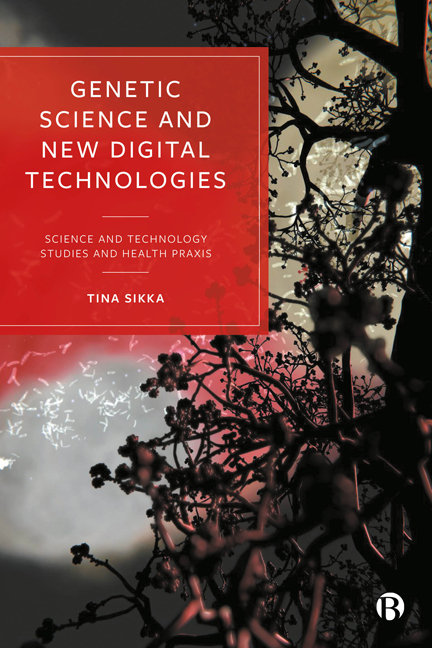Book contents
- Frontmatter
- Contents
- Notes on Contributors
- Introduction
- 1 Social and Behavioural Genomics and the Ethics of (In)Visibility
- 2 PureHealth: Feminist New Materialism, Posthuman Auto-Ethnography and Hegemonic Health Assemblages
- 3 Ambivalent Embodiment and HIV Treatment in South Africa
- 4 An ‘Artificial’ Concept as the Opposite of Human Dignity
- 5 Health Praxis in the Age of Artificial Intelligence: Diagnostics, Caregiving and Reimagining the Role(s) of Healthcare Practitioners
- 6 Digital Health Technological Advancements and Gender Dynamics in STS
- 7 Automation in Medical Imaging: Who Gets What AI Sees? Insights from the Adopters’ Perspective
- 8 Robots for Care: A Few Considerations from the Social Sciences
- 9 Are Ovulation Biosensors Feminist Technologies?
- Conclusion
- Index
7 - Automation in Medical Imaging: Who Gets What AI Sees? Insights from the Adopters’ Perspective
Published online by Cambridge University Press: 28 March 2024
- Frontmatter
- Contents
- Notes on Contributors
- Introduction
- 1 Social and Behavioural Genomics and the Ethics of (In)Visibility
- 2 PureHealth: Feminist New Materialism, Posthuman Auto-Ethnography and Hegemonic Health Assemblages
- 3 Ambivalent Embodiment and HIV Treatment in South Africa
- 4 An ‘Artificial’ Concept as the Opposite of Human Dignity
- 5 Health Praxis in the Age of Artificial Intelligence: Diagnostics, Caregiving and Reimagining the Role(s) of Healthcare Practitioners
- 6 Digital Health Technological Advancements and Gender Dynamics in STS
- 7 Automation in Medical Imaging: Who Gets What AI Sees? Insights from the Adopters’ Perspective
- 8 Robots for Care: A Few Considerations from the Social Sciences
- 9 Are Ovulation Biosensors Feminist Technologies?
- Conclusion
- Index
Summary
Introduction
The impact of digital technologies on labour has become in the past decade a focus of science and technologies studies (STS). The potential effects that a group of integrated technologies – connectivity, Big Data, the increase in computing capacity, forms of machine learning – could have on the quantity of employment and on the quality of working practices in most sectors generate widespread fears and, at times, hopes for profound social change. The rationale used to estimate these effects, in the first stage of research, was primarily based on utilitarian techno-economic categories, that is, oriented to assess (a) the technical feasibility of automation and (b) the cost and, therefore, any competitive advantage that could derive from implementation. Less attention was paid to other important non-techno-economic factors – sociotechnical, cognitive-behavioural, historical and cultural – that constitute the core of the interdisciplinary approach of STS.
In this context, the application of digital technologies and artificial intelligence to medical imaging constitutes an ideal case for this dominant cognitive approach. In a sector that has long been deeply invested in the use of digital technologies, first in preclinical research and then in the therapeutic field, medical imaging has been considered an activity inevitably destined to be improved by new technologies, in terms of the quantity and quality of diagnostic activities, while clinicians and technicians were seen as predestined to be sacrificed on the altar of progress.
Is this accurate? The first experiences of Computer Aided Diagnosis systems from the 1990s onwards showed that the unfolding of these implications is much more complex and multifaceted than the reductionism of rational economic models can represent. The first experiences based on the use of machine-learning systems in work processes that seem ideal for their application have led to interesting but limited results and, above all, these have not become fully institutionalized in healthcare systems.
This chapter intends to exemplify some non-techno-economic factors that could be at the basis of these contradictory results, in order to articulate analytical tools that can be used to study the effects of new technologies on work in healthcare and in other sectors.
- Type
- Chapter
- Information
- Genetic Science and New Digital TechnologiesScience and Technology Studies and Health Praxis, pp. 160 - 179Publisher: Bristol University PressPrint publication year: 2023



